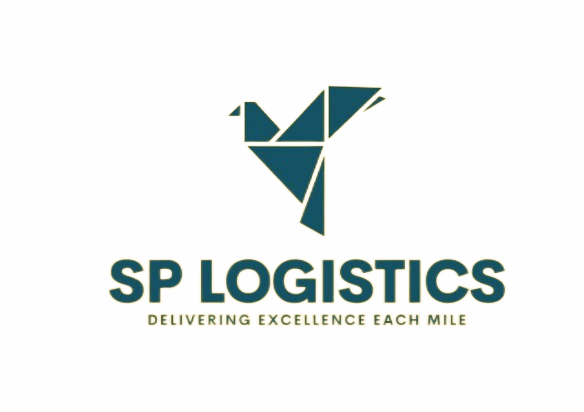

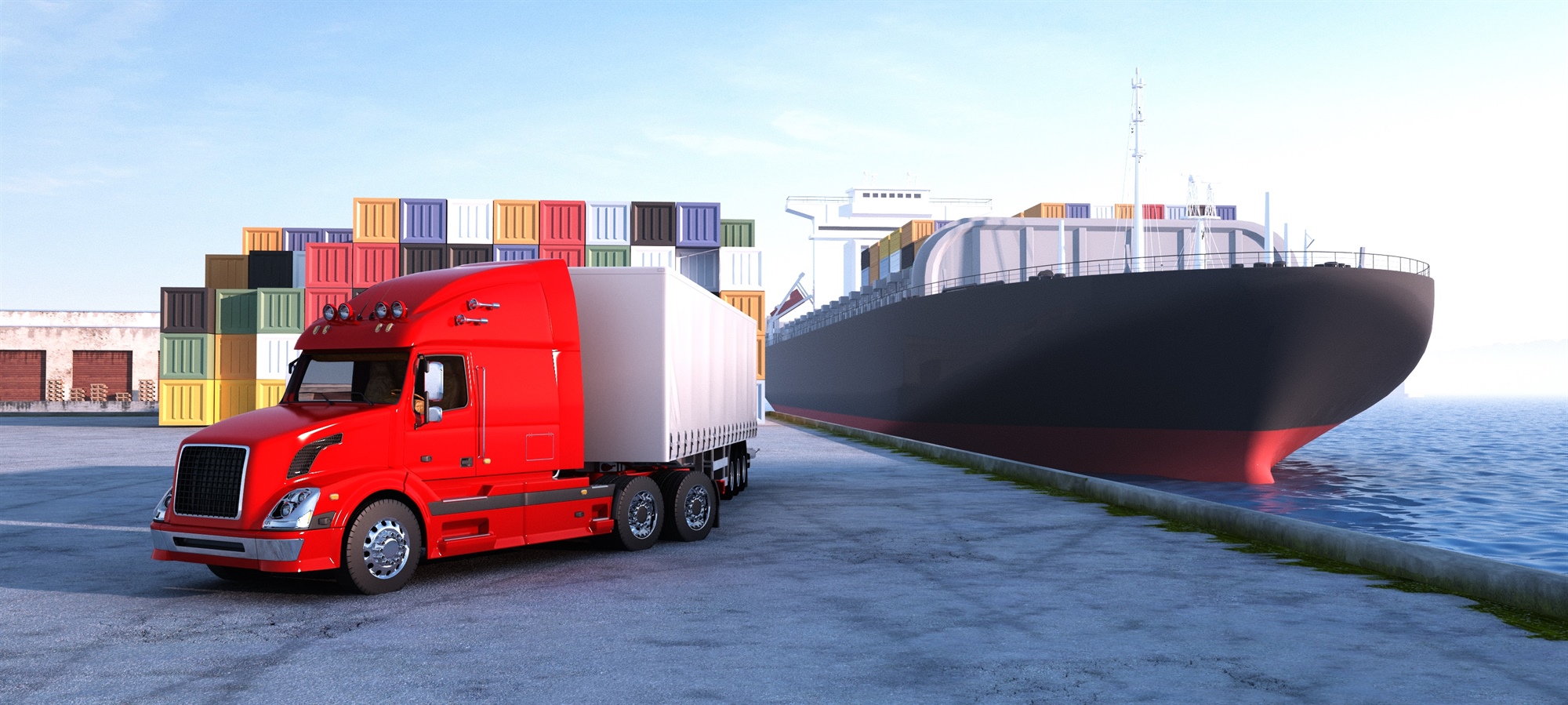
In this informative guide, we delve into the world of import drayage, an essential component of modern logistics
read more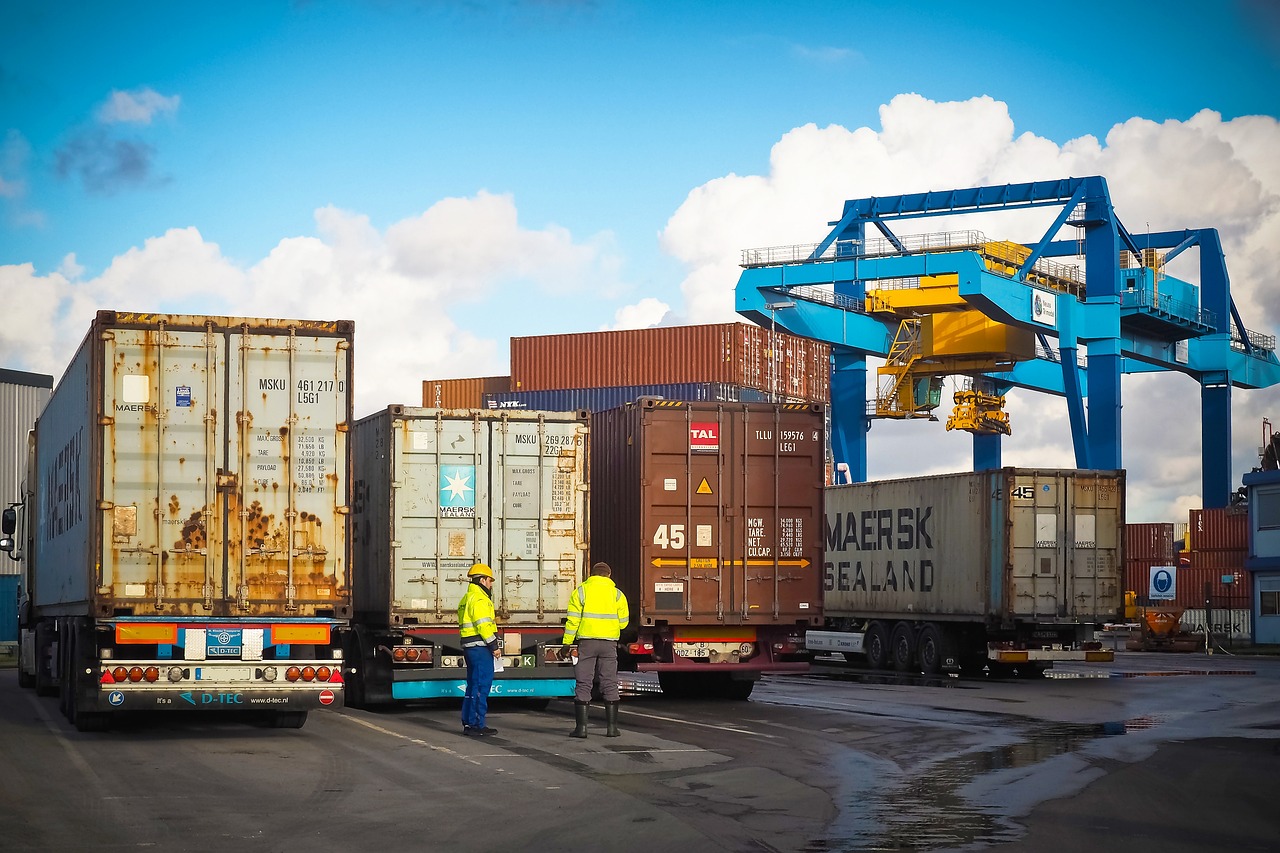
Discover the world of export drayage and how SP Logistics can be your trusted partner in expanding your global trade footprint
read more
In today's fast-paced logistics landscape, technology plays a pivotal role in optimizing drayage services.
read more
In the world of logistics and supply chain management, the efficient storage and management of goods play a pivotal role in ensuring a smooth flow of operations.
read more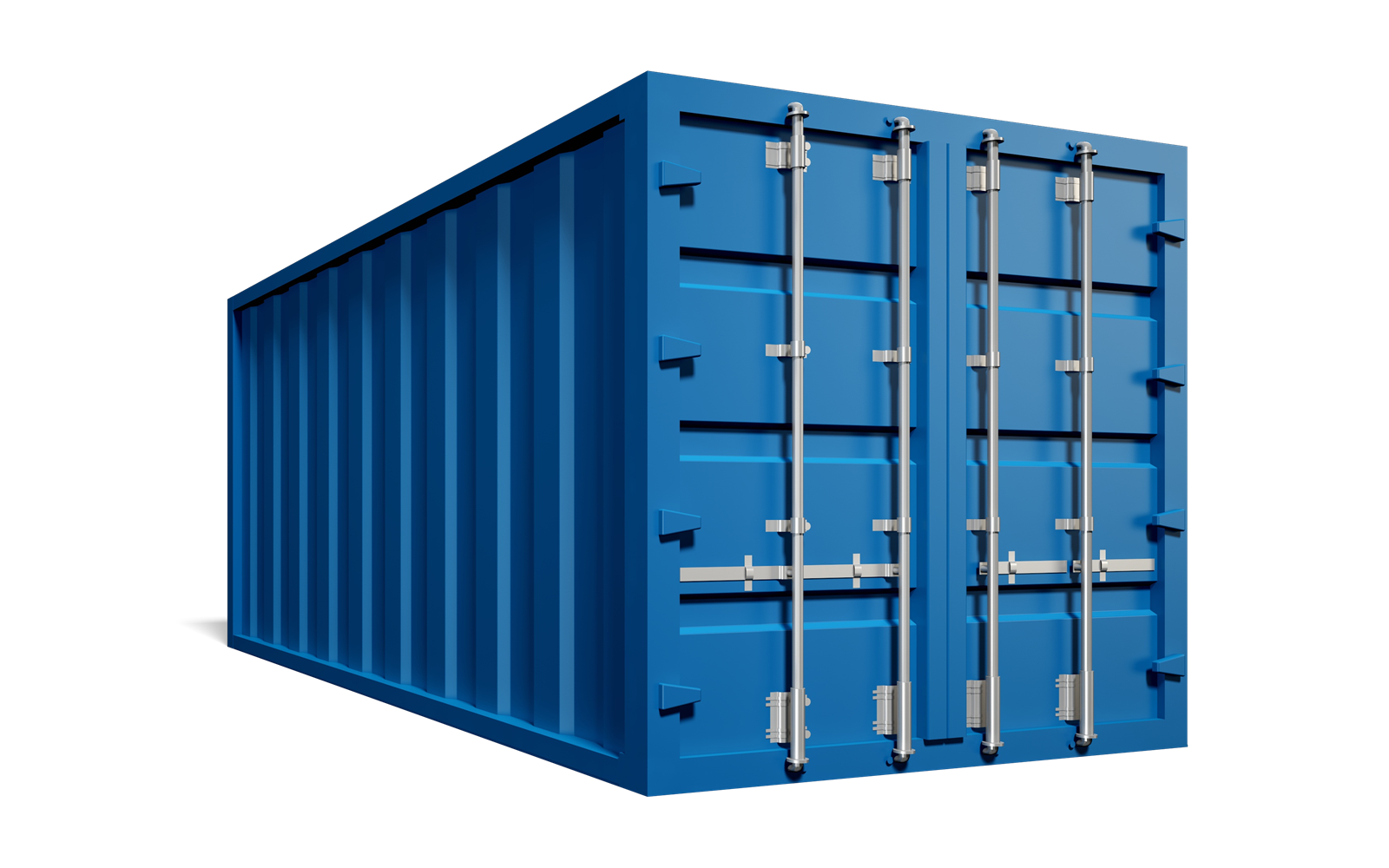
Shipping containers have labels because governments require them. The labels convey all sorts of information to those who know how and where to look.
read more
Artificial Intelligence (AI) is ushering in a new era in supply chain management, offering transformative solutions to long-standing challenges. As businesses navigate an increasingly complex global marketplace, the role of AI has become pivotal in streamlining operations, enhancing efficiency, and driving innovation within the supply chain.
One of the most significant ways AI is impacting the supply chain is through its ability to revolutionize demand forecasting. By analyzing vast datasets, historical trends, market dynamics, and even external factors like weather patterns, AI algorithms can generate remarkably accurate demand forecasts. This not only helps companies optimize inventory levels but also reduces the risk of overstocking or experiencing costly stockouts.
Moreover, AI's influence extends to inventory management, where it introduces unprecedented levels of precision. By taking into account factors such as demand variability, lead times, and storage costs, AI can develop dynamic inventory strategies. These strategies maximize the efficient utilization of warehouse space, lower carrying costs, and minimize waste.

Supply chain visibility is another area where AI is proving invaluable. Real-time data analytics and monitoring capabilities empower companies to gain deeper insights into their supply chain operations. This enhanced visibility enables proactive issue resolution and more informed decision-making. In an era where disruptions can have cascading effects, such visibility is an indispensable asset.
AI isn't just about optimizing internal operations; it's also reshaping how goods move from one place to another. AI-driven route optimization considers a myriad of factors, such as traffic conditions, weather forecasts, and delivery constraints. As a result, transportation routes become more efficient, reducing costs, minimizing delivery times, and contributing to environmental sustainability.
Beyond logistics, AI is a driving force behind demand-driven manufacturing. By dynamically adjusting production schedules based on real-time demand data, companies can minimize excess inventory and ensure products are manufactured precisely when and where they're needed.
AI's impact extends to quality control, too. Through AI-powered sensors and image recognition technology, companies can identify defects and anomalies in products and materials with unprecedented accuracy. This is particularly crucial in industries where product quality is paramount.
In addition to these operational enhancements, AI is revolutionizing supplier relationship management. By analyzing supplier performance data, companies can make data-driven decisions about supplier selection, negotiation, and risk mitigation. This leads to better supplier relationships and reduced procurement costs.

Reduced Wear and Tear
Short-haul trucks tend to experience less wear and tear compared to their long-haul counterparts. The lower mileage and fewer hours of operation result in lower maintenance costs and extended lifespans for your trucks. Fewer repairs and replacements free up resources that can be directed towards growing your business and improving your overall logistics strategy.
Swift Turnaround Times
In a world where speed is often of the essence, short-haul trucking shines with its rapid turnaround times. This benefit is especially valuable for businesses dealing with time-sensitive goods or navigating seasonal fluctuations in demand. The ability to meet and exceed customer expectations swiftly can set you apart from the competition and foster stronger client relationships.
Local Expertise and Less Driver Fatigue
Short-haul drivers are typically well-versed in local routes, traffic patterns, and delivery locations. This local expertise not only leads to efficient navigation but also helps in avoiding unnecessary delays, ensuring that your products reach their destination on time. Additionally, shorter workdays for drivers in short-haul operations reduce the risk of fatigue-related issues, enhancing safety and compliance.
In the intricate world of logistics and transportation, the age-old debate between short-haul and long-haul trucking continues to evolve. While both options have their merits, there is a growing recognition of the distinct advantages that short-haul trucking offers, especially for businesses operating within specific geographic areas. In this article, we explore why short-haul trucking is gaining prominence as a cost-effective and efficient solution.
Efficiency in Local Markets
The hallmark of short-haul trucking is its exceptional efficiency in serving local and regional markets. If your business primarily operates within a specific geographic region, short-haul trucking aligns perfectly with your needs. With shorter distances to cover, goods can be transported swiftly and reliably. This agility allows your company to respond promptly to the ever-changing demands of your customers, positioning you as a dependable and responsive player in your local market.
Fuel Savings and Sustainability
One of the most striking advantages of short-haul trucking is the reduction in fuel consumption. Short-haul routes inherently require less time on the road, leading to significantly lower fuel expenses. In an era of fluctuating fuel prices, these savings can have a substantial impact on your bottom line. Moreover, short-haul trucking's contribution to sustainability cannot be overlooked. Reduced time on the road translates to fewer emissions, aligning your operations with environmentally conscious practices and increasingly stringent regulations.
Cost-Effective Local Distribution
For businesses targeting local markets, short-haul trucking provides a cost-effective solution for delivering goods to nearby customers. Lower transportation costs can make your products more competitive in local markets, potentially leading to increased sales and market share.
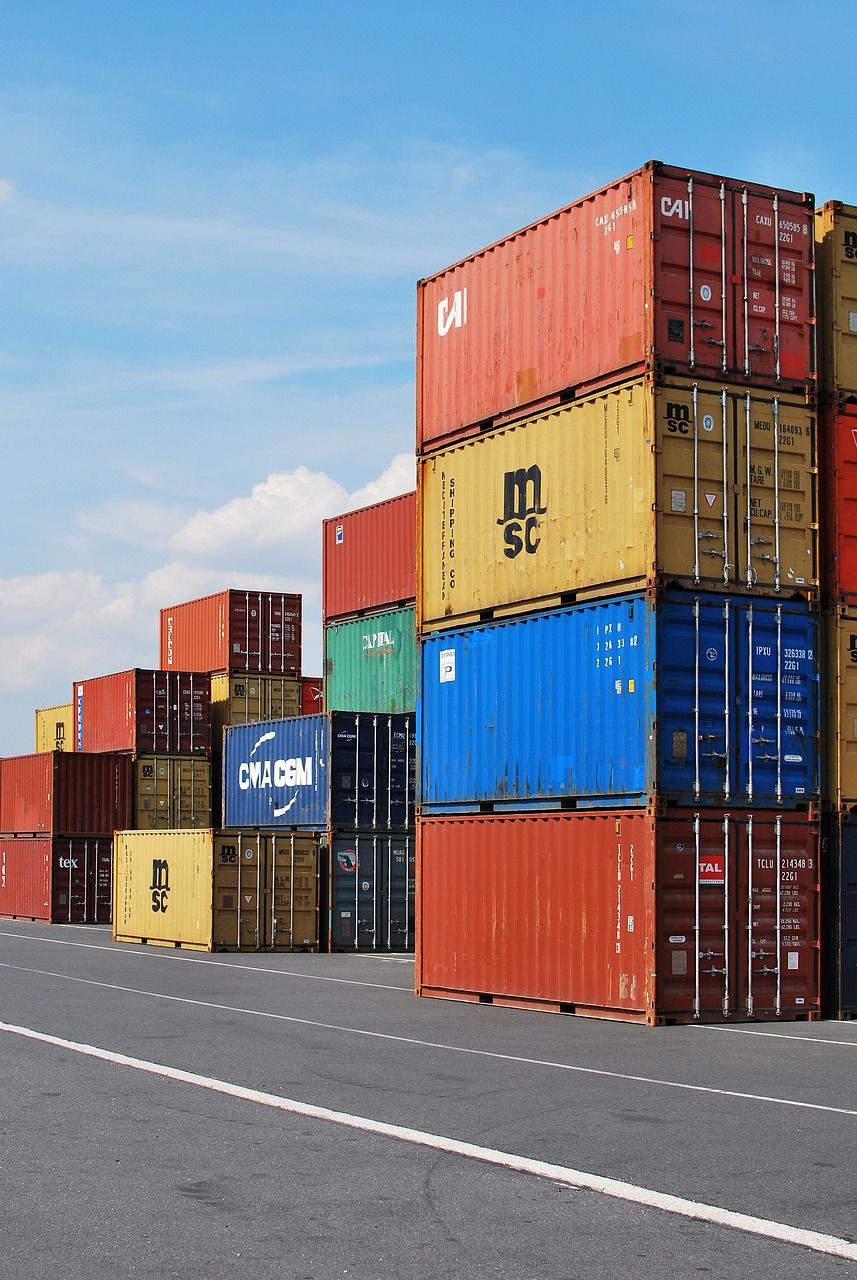
Expertise: Our team comprises experts in import drayage who understand the nuances of international shipping and customs regulations. We've successfully handled a wide range of cargo types and have the knowledge to navigate any challenges that may arise.
Technology: We invest in cutting-edge technology to provide you with real-time tracking and visibility into your shipments. This transparency ensures you're always in the know about the status of your cargo.
Cost Efficiency: We optimize routes and schedules to reduce transit times and minimize costs. Our efficient operations save you money while ensuring on-time delivery.
Compliance: Importing goods involves adhering to a complex web of regulations. SP Logistics helps you navigate customs and compliance, ensuring your shipments meet all necessary requirements.
Flexibility: Every business is unique, and so are its logistics needs. We offer tailored import drayage solutions that match your specific requirements, whether you're a small business or a large corporation.
Import Drayage Best Practices
While SP Logistics takes care of the logistics details, here are some best practices to keep in mind when it comes to import drayage:
Plan Ahead: Start planning your import logistics well in advance to account for potential delays or challenges.
Documentation: Ensure all required documentation is complete and accurate to prevent customs issues.
Communication: Maintain clear communication with your logistics partner and stay informed about the status of your shipments.
Efficiency: Optimize your supply chain by selecting the most efficient routes and transportation methods.
Case Studies: Successful Import Drayage Stories
Throughout our years of serving businesses across various industries, we've had the privilege of being part of many import success stories. In the following articles, we'll delve into some of these case studies, showcasing how SP Logistics helped businesses like yours overcome import drayage challenges and achieve their international trade goals.
In today's interconnected world, international trade is the lifeblood of the global economy. It's the reason products from one corner of the world find their way to another, and it's why businesses of all sizes are exploring new markets and opportunities beyond their borders. At the heart of this intricate web of trade lies import drayage, a crucial step in the logistics journey.
Understanding Import Drayage
Import drayage, often referred to simply as drayage, is the short-distance transport of goods from a port or intermodal facility to a final destination, typically a warehouse or distribution center. It's a linchpin in the supply chain, bridging the gap between the arrival of goods at a port and their distribution to retailers or consumers.
At SP Logistics, we understand that the world of import drayage can seem complex and challenging, especially for businesses new to the international trade arena. That's why we've prepared this comprehensive guide to help you navigate this critical phase of logistics efficiently and cost-effectively.
Why Choose SP Logistics for Import Drayage?
Before we delve into the intricacies of import drayage, let's address why SP Logistics is your ideal partner in this endeavor. With years of experience in the field, we've established ourselves as a trusted name in the logistics industry. Our commitment to excellence and customer satisfaction is unwavering, and here's what sets us apart:
Streamlining Customs and Compliance
One of the most critical aspects of import drayage is ensuring compliance with customs regulations. Navigating the maze of paperwork and regulations can be daunting, but it's a challenge we're well-equipped to handle. Our customs experts work closely with authorities to ensure your shipments move smoothly through the customs process. We'll help you with everything from documentation to duty and tax calculations, so you can focus on growing your business.
Stay tuned for our upcoming articles in this series, where we'll explore the intricacies of export drayage and the role of technology in optimizing drayage services. At SP Logistics, we're committed to simplifying logistics and facilitating the seamless movement of goods across borders. Import drayage is just the beginning of your logistics journey with us.
For more information or to discuss your specific import drayage needs, contact SP Logistics today.
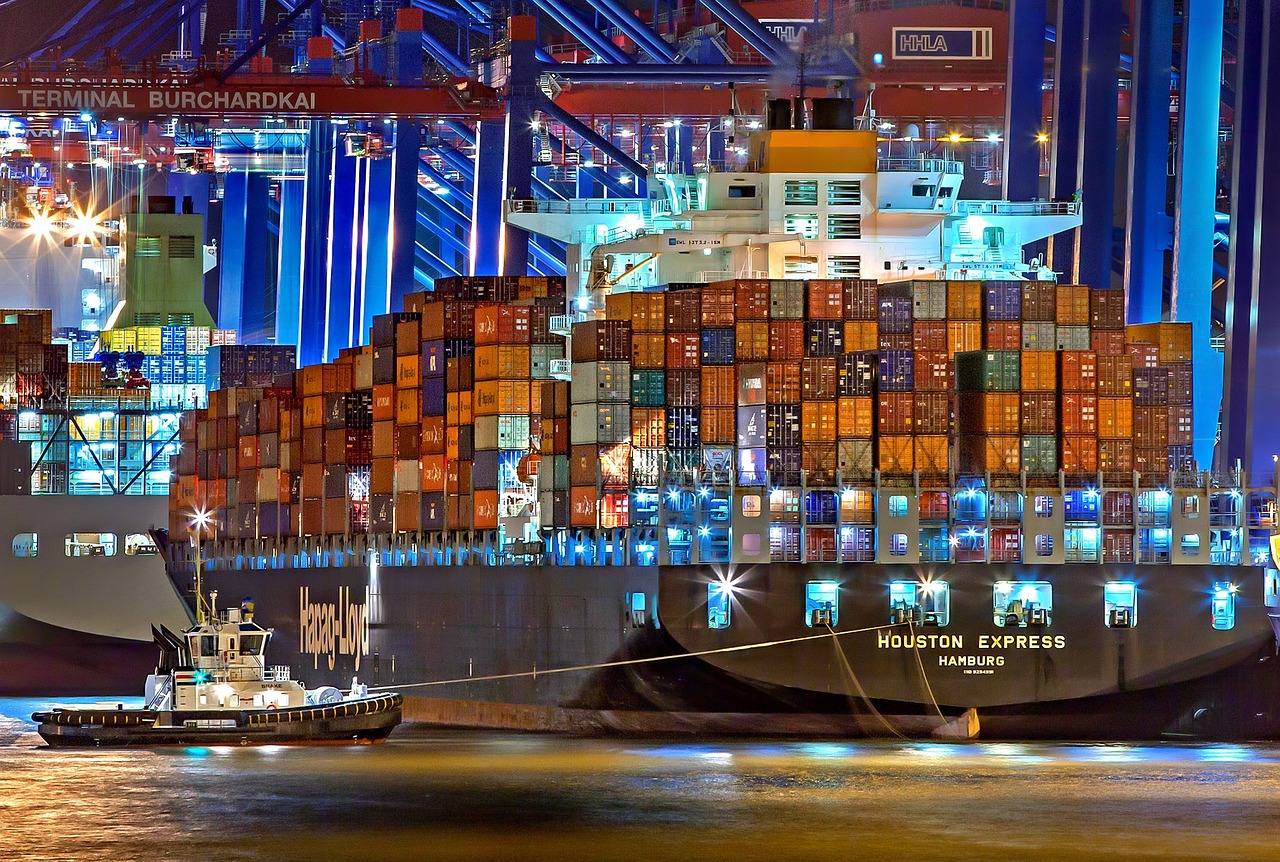
In the dynamic world of international trade, the export of goods is a key driver of economic growth and business expansion. For companies looking to tap into global markets, efficient export logistics is essential. This article explores the realm of export drayage and how SP Logistics can be your trusted partner in navigating the complexities of expanding your reach in the global trade arena.
The Essentials of Export Drayage
Export drayage, much like its import counterpart, plays a pivotal role in the supply chain. It involves the transport of goods from your facility to a port or intermodal facility for their onward journey to international destinations. This crucial step ensures that your products are efficiently loaded onto ships or other modes of international transportation.
At SP Logistics, we understand that exporting goods can be a complex endeavor, with various regulations, logistics challenges, and timelines to manage. That's why we've prepared this comprehensive guide to help you streamline your export drayage operations and ensure your products reach global markets seamlessly.
Why SP Logistics for Export Services?
Before we delve into the intricacies of export drayage, it's essential to understand why SP Logistics is the ideal choice for your export logistics needs:
Experience: With years of experience in the logistics industry, we've become a trusted name for businesses of all sizes. Our expertise in export logistics allows us to navigate the complexities of international trade with ease.
Technology-Driven: We're at the forefront of technology adoption in logistics. Our advanced tools provide you with real-time tracking and visibility into your export shipments, ensuring you're always informed about the status of your cargo.

In today's rapidly evolving logistics landscape, the role of technology cannot be overstated. As businesses seek to streamline operations, enhance efficiency, and meet the demands of a fast-paced world, technology has become the driving force behind logistics innovation. At SP Logistics, we're at the forefront of this tech-driven transformation, harnessing the power of technology to optimize drayage services and provide our clients with a competitive edge.
Leveraging Technology for Drayage Efficiency
Drayage services are a critical link in the supply chain, connecting ports and intermodal facilities to local destinations. To ensure that goods move swiftly and seamlessly, it's essential to harness the capabilities of technology. Here's how technology plays a pivotal role in enhancing drayage efficiency:
Real-Time Tracking and Visibility: SP Logistics employs state-of-the-art tracking systems that offer real-time visibility into the status and location of your cargo. This transparency allows you to monitor your shipments every step of the way, ensuring peace of mind and enabling proactive decision-making.
Predictive Analysis for Smarter Decisions: Predictive analytics is a game-changer in drayage services. By analyzing historical data, traffic patterns, and other variables, we can anticipate potential delays or disruptions and adjust routes and schedules accordingly. This not only reduces transit times but also minimizes the risk of costly delays.
Optimized Routing: Technology enables us to optimize transportation routes, considering factors such as traffic conditions, road closures, and delivery constraints. This results in reduced transportation costs, minimized delivery times, and a smaller carbon footprint.
SP Logistics' State-of-the-Art Tools
At SP Logistics, we're committed to staying on the cutting edge of logistics technology. Here are some of the tools and systems we've implemented to enhance our drayage services:
Advanced Fleet Management: Our fleet is equipped with GPS tracking and telematics systems that provide real-time data on vehicle performance, driver behavior, and cargo conditions. This data allows us to optimize routes and ensure the safety of your shipments.
Cloud-Based Platforms: We use cloud-based platforms for seamless communication and data sharing. This allows for efficient collaboration between our teams and yours, ensuring that everyone is on the same page throughout the logistics process.
Predictive Analytics Engines: Our predictive analytics engines use machine learning algorithms to analyze vast datasets and predict potential disruptions. This proactive approach helps us keep your shipments on track.
Customized Reporting: We offer customized reporting tools that provide insights into your drayage operations. These reports can help you identify trends, optimize your supply chain, and make data-driven decisions.
Case Studies: Technology-Enhanced Drayage Success
The real measure of technology's impact is in its results. In our case studies, we'll delve into real-world examples of how SP Logistics leveraged technology to enhance drayage services and drive success for our clients. These success stories demonstrate the tangible benefits of a tech-driven approach to logistics.
As technology continues to evolve, SP Logistics remains committed to exploring new innovations and integrating them into our drayage services. Our goal is to not only meet but exceed your expectations, ensuring that your cargo reaches its destination efficiently and cost-effectively.
In conclusion, the power of technology is transforming drayage services, and SP Logistics is leading the way. By harnessing the capabilities of technology, we're optimizing routes, enhancing visibility, and providing our clients with a competitive advantage in the fast-paced world of logistics. Stay tuned for more insights and success stories as we continue to explore the ever-evolving landscape of drayage services.
For more information on our technology-driven drayage solutions or to discuss your specific logistics needs, contact SP Logistics today.
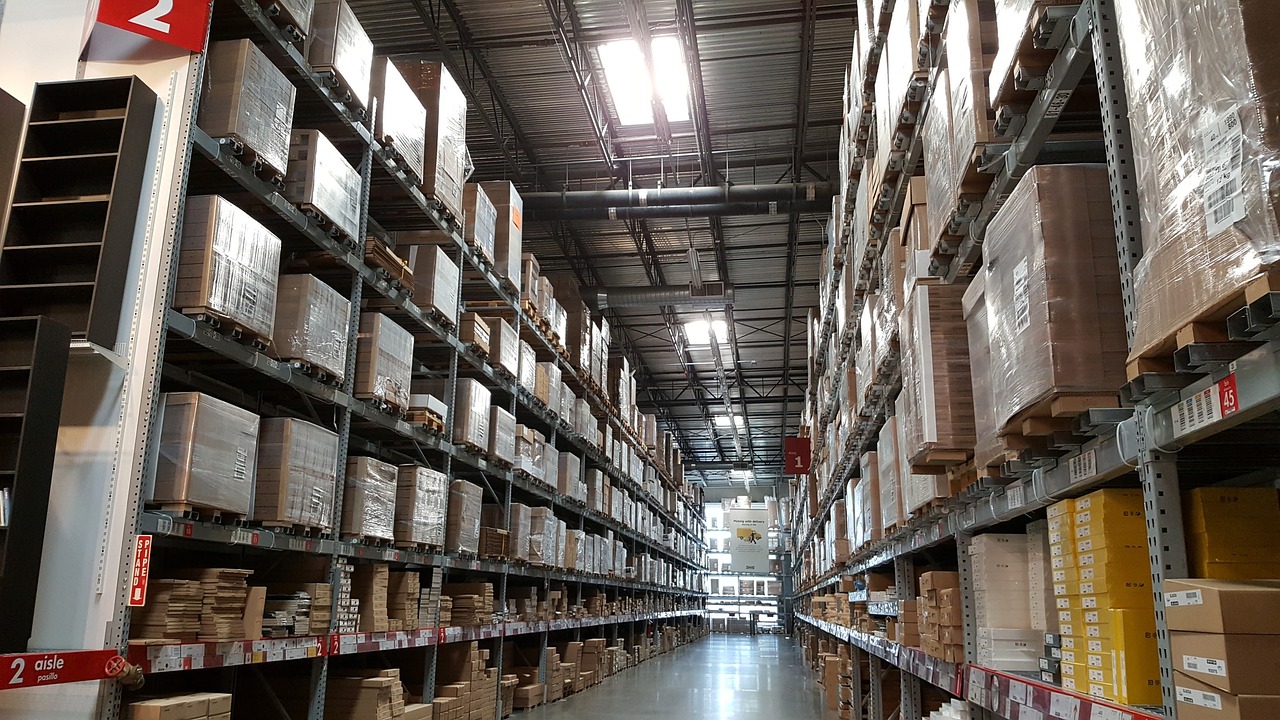
In the world of logistics and supply chain management, the efficient storage and management of goods play a pivotal role in ensuring a smooth flow of operations. Yard storage, in particular, is a crucial aspect that often goes underappreciated but is essential for businesses involved in shipping, warehousing, and distribution. At SP Logistics, we recognize the significance of yard storage and are committed to providing solutions that not only optimize your storage needs but also enhance the security and accessibility of your inventory.
The Significance of Yard Storage
Yard storage refers to the allocation of outdoor space, often in close proximity to a warehouse or distribution center, for the temporary storage of goods, equipment, or vehicles. This strategic placement of inventory allows for seamless movement of goods between storage and transportation, ensuring a responsive and efficient supply chain. Here's why yard storage is vital for businesses:
Optimized Space Utilization: Yard storage maximizes the use of available space, especially for businesses with limited indoor storage capacity. It provides a cost-effective solution for storing goods that do not require shelter from the elements.
Faster Turnaround: With goods stored nearby, loading and unloading become quicker and more efficient. This is especially beneficial for businesses dealing with time-sensitive products or just-in-time inventory management.
Enhanced Inventory Control: Yard storage solutions facilitate better tracking and control of inventory. With well-organized yards and advanced tracking technology, you can easily locate and manage your goods.
Cost Savings: Yard storage can be a cost-effective alternative to expanding indoor warehousing facilities. By optimizing outdoor space, you can avoid the need for costly construction and maintenance of additional storage structures.
SP Logistics' Yard Storage Solutions
At SP Logistics, we understand that yard storage is not just about finding an open space and placing goods there. It involves careful planning, organization, and security measures to ensure the safety and accessibility of your inventory. Here's how our yard storage solutions stand out:
Strategic Layout: We design our yard storage layouts with efficiency in mind. Our strategic placement of goods ensures easy access and minimizes the time required for loading and unloading.
Security Measures: Security is paramount when it comes to yard storage. We employ robust security measures, including surveillance, access control, and inventory tracking, to protect your assets from theft and damage.
Customization: We offer customized yard storage solutions tailored to your specific needs. Whether you require short-term storage for seasonal goods or long-term storage for equipment, we have the flexibility to accommodate your requirements.
Advanced Tracking: Our yard storage facilities are equipped with advanced tracking technology. This ensures real-time visibility into the status and location of your inventory, allowing for proactive management.
Streamlined Operations with Yard Storage
Imagine a logistics operation where goods seamlessly transition between yard storage and transportation, all while being securely monitored and tracked. That's the level of efficiency and security that SP Logistics' yard storage solutions bring to the table.
In conclusion, yard storage is an indispensable part of modern logistics, and SP Logistics is your partner in unlocking its full potential. Our strategic layout, robust security measures, customization options, and advanced tracking technology are designed to enhance the efficiency and security of your yard storage operations. Contact us today to learn more about how we can optimize your yard storage needs and streamline your supply chain.
For inquiries about our yard storage services or to discuss your specific logistics requirements, contact SP Logistics.
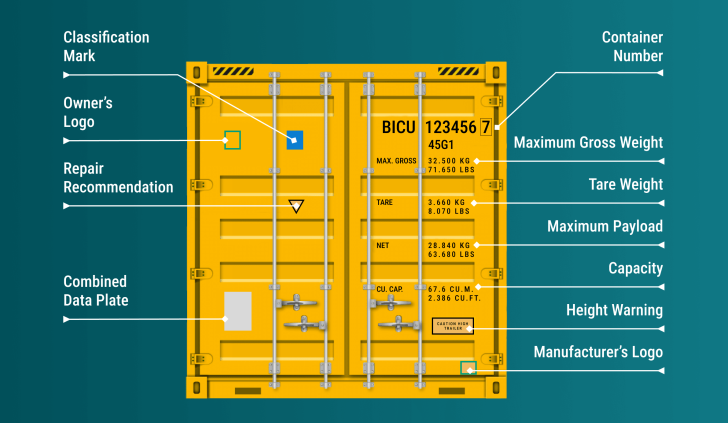
1. Classification Society
2. Owner Details
3. Warning/Handling Instruction
4. CSC / ACEP
5. High Cube Warning
6. BIC Code + Check Digit
7. Size + Type
8. Gross Weight
9. Tare Weight
10. Max Payload
11. Capacity in Volume
12. Height Warning
13. Manufacturer Details
Why do shipping containers have labels?
Shipping containers have labels because governments require them. The labels convey all sorts of information to those who know how and where to look. They do everything from identify the specific container from the millions of others in the world, indicate the size and even notify us of what is contained inside them.Important markings can be found on all parts of a shipping container. Here is where you can find shipping container labels:
Door end: The door end is the part of the container that holds the most information. On the door end, you will find the maximum gross weight, tare weight, maximum payload, height warning. You may also find the owner’s logo and repair recommendations.
Side: The side has the identification number which contains the BIC code, serial number, and check digit.
Top: The top includes the identification number and size and type codes.
Front end: The front end includes the identification number and size and type codes.
Maximum gross weight
The maximum gross weight is a number found on the door end of the shipping container. It tells the people packing the container the maximum weight the container can carry in pounds and kilograms, including its own weight, which is called tare weight.Maximum payloadThe maximum payload is the maximum amount of weight that can be packed into the container as cargo. Mis declaring this number can cost lives and property damage. This number matches the number on the packing slip and doesn’t include tare. It’s represented on the back of the container to let the customer know what to expect from the payload inside.
Height warning
Height markings are mandatory on shipping containers more than 8 feet, 6 inches tall. These are usually pictured as measurement figures on a yellow background outlined in black. This number is displayed on the right-hand corner of each side.
Identification Number
The identification number comprises three important parts: the BIC code, serial number, and check digit.
BIC codeThe Bureau International des Containers et du Transport Intermodal (BIC) issues an owner code to shippers. Each code is unique to identify the owner of the specific container. There can be no duplicate BIC codes. The owner code, or BIC code, is the first 3 letters of the identification number. A fourth letter describes the equipment category.Serial numberThe serial number is 6 numbers serializing the shipping container. This allows for tracking of the container.
Check digit
The check digit is a digit within the serial number that is used to check the validity of a serialized shipping container’s identification number.
Size and type codes
ISO Codes tell the shipper the size and type of container no matter what region of the world they are in by using a standardized codification system that is globally accepted.
Other markings on a shipping container
Owner name and logo: This identifies the company that owns the shipping container.Hazard warnings: Plates that identify any hazardous materials contained in the shipment are present.Caution stickers: This includes “Warning High Cube” and other cautions.CSC plate: The Container Safety Convention (CSC) plate is required for international trading. It highlights the most important owner and safety information in one place.

